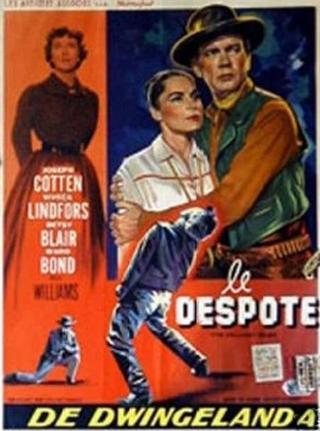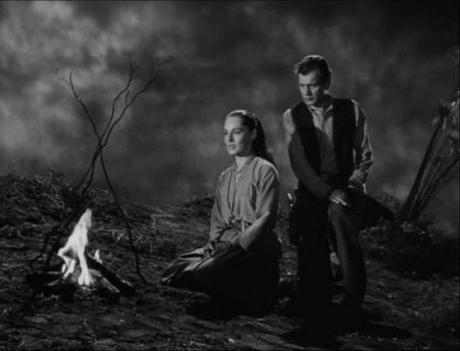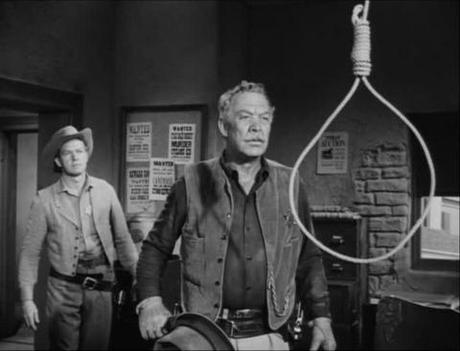
When I started this blog a good many years ago my motivation was to talk about movies, in particular westerns. At the time I felt the genre was somewhat neglected in comparison to others, and that what we might refer to as the medium efforts were passed over with depressing regularity. Films such as The Halliday Brand (1957) were what I had in mind, where a strong cast and crew worked on a project that only a smattering of people seemed to be aware of. This is a movie where the final result isn't quite up to the level of the filmmakers' ambition, where you have to admire the stylish execution even as you experience a touch of regret for a promising scenario which doesn't quite gel.
The opening makes it clear that the Halliday family is a troubled one, Clay (Bill Williams) attempting to coax his brother Daniel (Joseph Cotten) back to the homestead at the point of a gun. The reason is Dan senior (Ward Bond), local lawman and hardheaded pioneer, is on his deathbed and keen to see his estranged son while he still has time. Now this is an especially dark tale of familial strife, bordering on film noir in its intensity and tragedy, and it's therefore only appropriate that its telling should be largely undertaken via flashback. It's here that we learn how the elder Halliday is so consumed with an unpleasant combination of racial prejudice and stubborn pride that he's prepared to ignore the advice of his sons and his own inner voice. His inflexibility leads to a lynching that breaks his daughter's heart, and then a pointless confrontation which drives a powerful wedge between himself and the son who bears his name. And at the center of this emotional maelstrom sits the mystically serene enigma that is Aleta (Viveca Lindfors), the half-Indian girl who has captured the hearts of both Halliday brothers.

I have to say I really like the films of Joseph H Lewis; they may not always be wholly successful but there is an artistic drive and strong visual sensibility at their heart which is hard to resist. The Halliday Brand sets itself up as a classical tragedy played out against a frontier backdrop, which is a noble enough intention and one which has paid off in other productions. Here I think it works only up to a point as it feels as though there are too many themes (or too many facets of themes) competing for the viewer's attention over its reasonably brief running time. The essence of it all is the Halliday brand of the title - the literal one is the symbol of the buried tomahawk, of conflicts resolved through strength, while the figurative one is the harsh implacability represented by Halliday senior and the barely acknowledged version of the same to be found in the younger generation. One could draw inferences from the casting of arch-conservative Ward Bond as the in such a role but it's (in my opinion) an optional exercise and the movie still works without doing so - it's the human drama at the center of it all that counts for more but the layered structure facilitates different levels of appreciation if desired.

Bond is as impressive as ever in his role here, mean and manipulative to the end and an imposing, authentic physical presence. Joseph Cotten is less effective I feel, his natural reserve fits the quieter and more introspective side of his character but his performance feels somewhat mannered at times and could have used a bit more raw passion. Swedish actress Viveca Lindfors sounds like an odd choice to play a half-Indian girl but her striking beauty, photographed with superb skill by Ray Rennahan, works in her favor and I found her credible in the role. In support there is good solid work done by Bill Williams, Jay C Flippen and a virtually unrecognizable Jeanette Nolan.
The Halliday Brand is available on DVD from the US via the MGM Manufacture on demand line. It looks like an older television master was utilized, meaning an acceptable if unspectacular image in terms of clarity and contrast. However, bearing in mind this is a 1957 production, it's almost impossible to see how the Academy ratio presented on the disc could be correct. That aside, the film is a moderately successful example of western noir - the classical aspirations don't all hit the mark but the attempt remains a stylish and entertaining one.
